Microbes: bacteria — DRAFT ONLY
Learning Objectives
Be able to describe a bacterium.
Know how a virus replicates.
Be able to name 2 common beneficial bacteria and 2 bacteria that commonly cause illnesses.
2 ways humans benefit and 2 ways humans could be harmed
Hi everyone, today I am going to talk about the bacteria.
Bacteria
Bacteria are microscopic, single-celled organisms that exist in millions of environments, both inside and outside other organisms.
Bacteria are thought to have first appeared on earth about four billion years ago. The oldest known fossils are bacteria-like organisms.
Bacteria can use most organic compounds and some inorganic compounds as food, and some can survive in extreme conditions
Bacteria are widely distributed in soil and water, or in symbiosis with other organisms. The human body also carries a fair number of bacteria. The total number of bacterial cells in the human body and on the epidermis is estimated to be about ten times that of the human body.
Three type of bacteria:
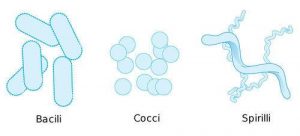
Bacillus: These are called bacilli. Some rod-shaped bacteria are curved. These are called vibrio bacteria. Examples of rod-like bacteria include bacillus anthracis or anthrax.
Coccus: sphericity: sphere-shaped bacteria are called cocci. One type of bacteria is cocci. Examples include groups of streptococci responsible for “streptococcal laryngitis”
Spirilla: Bacteria that are spiral. If the coil is very tight, it is called a spirochete. Lyme disease and syphilis are caused by bacteria of this shape.
There are many variations within each shape group.
Structure of Bacteria:
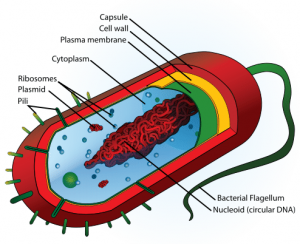
Capsule: A layer found on the outside of the cell wall of some bacteria
Cell wall: A layer made of a polymer called a peptidoglycan. The cell walls give the bacteria their shape. It’s on the outside of the plasma membrane
Plasma membrane: Located in the cell wall, it produces energy and transmits chemicals. The membrane is permeable, which means that material can pass through
Cytoplasm: A gelatinous substance in the plasma membrane containing genetic material and ribosomes.
DNA: Contains all genetic instructions used in bacterial development and function. It’s in the cytoplasm
Ribosomes: where proteins are made or synthesized. Ribosomes are complex particles made up of RNA – rich particles
Plasmid: A plasmid is a small, extrachromosomal DNA molecule within a cell that is physically separated from chromosomal DNA and can replicate independently
Flagellum: Used for movement to push certain types of bacteria
Pili: These hair-like appendages on the outside of the cell stick to the surface and transfer genetic material to other cells
Reproduction and transformation:
binary fission: A form of asexual reproduction in which one cell continues to grow until a new cell wall grows through the center, forming two cells. They separate, giving the two cells the same genetic material
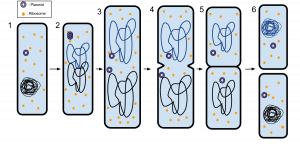
Transfer of genetic material: Cells acquire new genetic material through a process of binding, transformation, or transduction. These processes can make bacteria stronger and more resistant to threats such as antibiotic drugs.
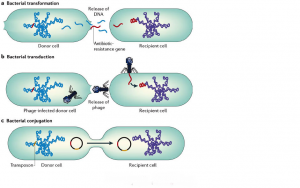
Spores: When certain types of bacteria are scarce, they form spores. The spores contain the DNA of the organism and contain the enzymes needed to germinate. They are very resistant to environmental pressure. Spores can remain inert for centuries until the right conditions emerge. They can then reactivate and become bacteria.
Spores can survive environmental pressures, including ultraviolet (UV) and gamma radiation, dryness, starvation, chemical exposure, and extreme temperatures.
Some bacteria that are good for us:
Yeast: current studies have found that yeast has good probiotics, such as regulating intestinal balance, promoting feed transformation and improving the immune function of the body, etc., which are mostly used as feed additives in livestock.
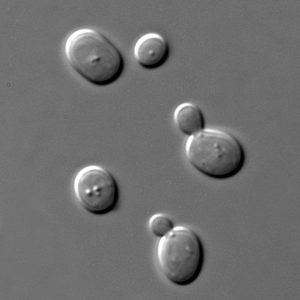
Lactobacillus: can promote the growth of animals, regulate the normal flora of gastrointestinal tract and maintain the balance of micro-ecology
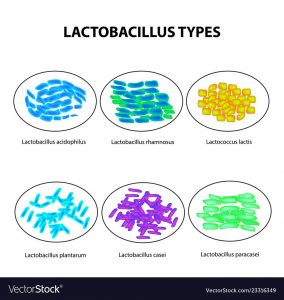
Some Bacteria that are bad for us:
vibrio cholerae: Vibrio cholerae produces enterotoxin, which is a severe toxin release. The toxin acts on the intestinal wall to promote the excessive secretion of intestinal mucosal cells, resulting in excessive discharge of water and salt, leading to severe dehydration and collapse. This leads to metabolic acidosis and acute renal failure.
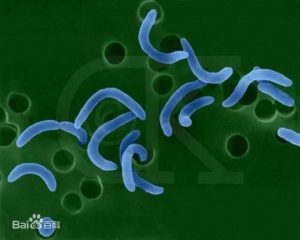
Corynebacterium diphtheriae:
Can produce the diphtheria toxin, which is bad for us. Diphtheria toxin has the function of inhibiting protein synthesis, and mainly inhibits the protein synthesis of mammals by inhibiting the translocation reaction

Uses of bacteria:
The survival of mankind: Many bacteria in the body play an important role in human survival. Bacteria break down nutrients in the digestive system, such as complex sugars, into forms the body can use.
Food preparation: Lactic acid bacteria are used with yeast and molds or fungi in the preparation of foods such as cheese, soy sauce, natto (fermented soy), vinegar, yogurt, and pickles.
Figure 1/2 Image Credit: Mariana Ruiz Villarreal (LadyofHats) (licensed under Public Domain)
Figure 3 Image Credit: Ecoddington14 (Wikimedia Commons), (licensed under CC BY-SA 3.0)
Figure 4 Image Credit: Nature, Furuya and Lowy (2006), (licensed under CC BY-SA 3.0)
Figure 5 Image Credit: Masur (Wikimedia Commons), (licensed under Public Domain)
Figure 6 Image Credit: mikrostoker (vectorstock) (licensed under Standard License EULA)
Figure 7/8 Image Credit: ??

